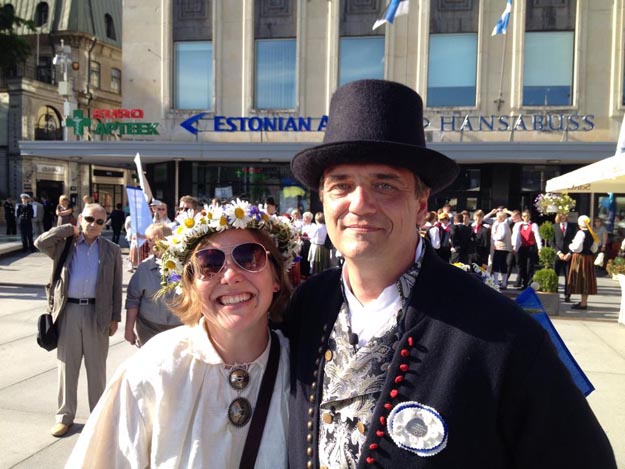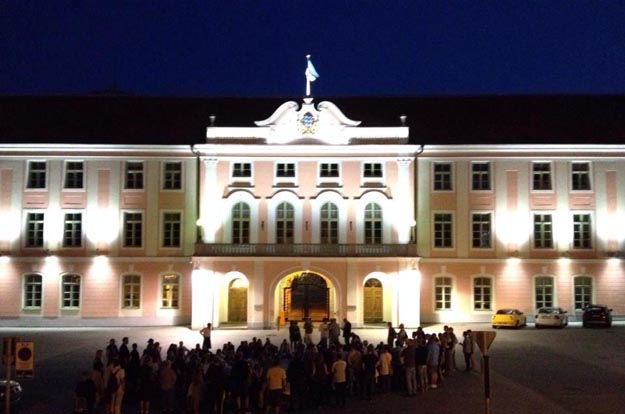 Liina M. Sarapik and Hirvo Surva.
Liina M. Sarapik and Hirvo Surva.
For the last three and a half days I have been immersed in, what my opinion, is the epitome of Estonian culture and the Estonian people – laulupidu (song festival). In the past year I had taken part in several larger scale events in North America leading up to this year’s laulupidu, including a smaller laulupidu at Seedrioru’s Suvihari summer solstice event in Canada last summer, organizing a weekend choral camp in New Jersey in November, and taking part in a weekend choral camp in Toronto in January, led by renowned conductor, and this year’s laulupeo artistic director himself, Hirvo Surva. It was at this last event that I had the great honor of meeting Hirvo Surva.
Hirvo’s mere presence is captivating. His conducting commands respect, which even with a choir of about 30,000 he most definitely had, and the outcome, as the crowd of close to a hundred thousand, is pure and beautiful, creating an awe-inspiring experience for the audience as well as singers. In turn, the admiration we singers have for Hirvo is insurmountable. And this was made clear to Hirvo at the end of the concert on Sunday when the choir remained onstage and started singing this year´s theme song ´Puudutus´ as an encore, twice.
However what I was most touched by (this year´s theme was ´´Touched by time. The time to touch.´´), was not what happened during the concerts or even at lauluväljak (the song festival grounds), but what happened late Sunday night into Monday morning in Vanalinn. A group of people, most of whom had performed earlier in the day – a few still in their rahvariided (folk dress)–were congregated in Raekoja plats (Town Hall Square), and were singing; sitting in the middle of everyone was Hirvo Surva, conducting once again. (And apparently this was already the second spot where Hirvo had been singing with a group.) The police came to let us know that we could no longer stay there, as the group had become larger, and so Hirvo suggested to quietly make our way up Toompea; along the way many more people joined, creating a Pied Piper effect.

Photo by Adam Tukk
Hirvo led us to sit right in front of Riigikogu (the Parliament building) where he first spoke to us about a few things, including the significance of that very spot during the singing revolution in the late 1980s, as well as the great importance of maintaining our Estonian language, heritage and culture, especially music and, as one person in the group called out, folk dance as well. However he stressed the utmost importance of holding onto our Estonian language. Then we began to sing again with Hirvo, of course, conducting.
Over the next hour or so we sang a few different choral pieces including ´Ärkamise aeg´ and ´Põhjamaa´ in front of Riigikogu, elsewhere on Toompea, and then concluding in Vabaduse Väljak (Freedom Square) at the ausammas (monument) commemorating the Estonian War of Independence (1918-1920), where Hirvo spoke about the significance of the monument and what it stood for.
After singing ´Põhjamaa´ one last time Hirvo bid us all a good night, despite most everyone pleading for him to stay and conduct us longer, however it was late – it was already starting to become light outside. And so, as happened onstage at laulupidu many hours earlier, people lingered, and continued to sing. For Hirvo, for laulupidu, for Eesti.
Liina M. Sarapik















